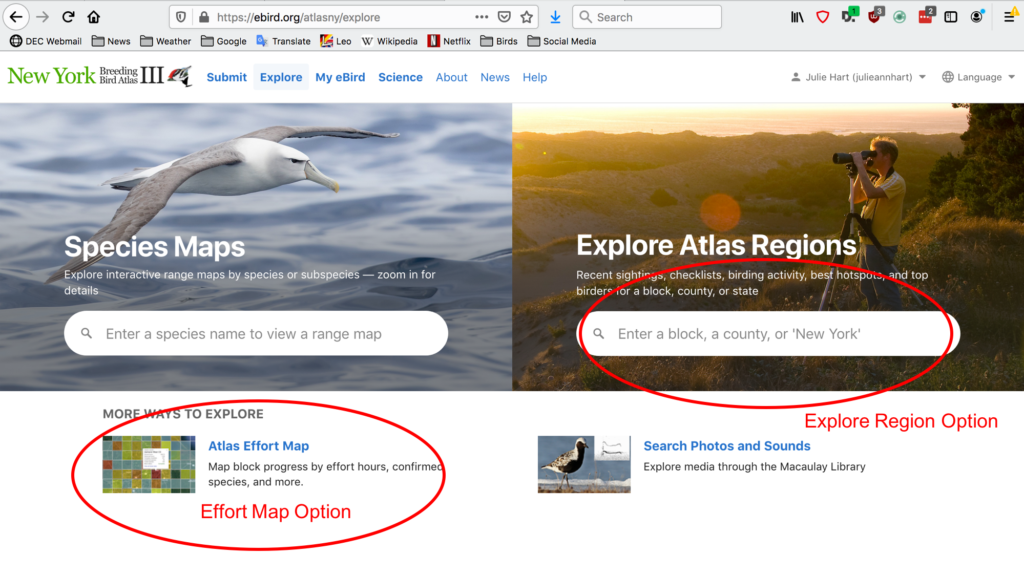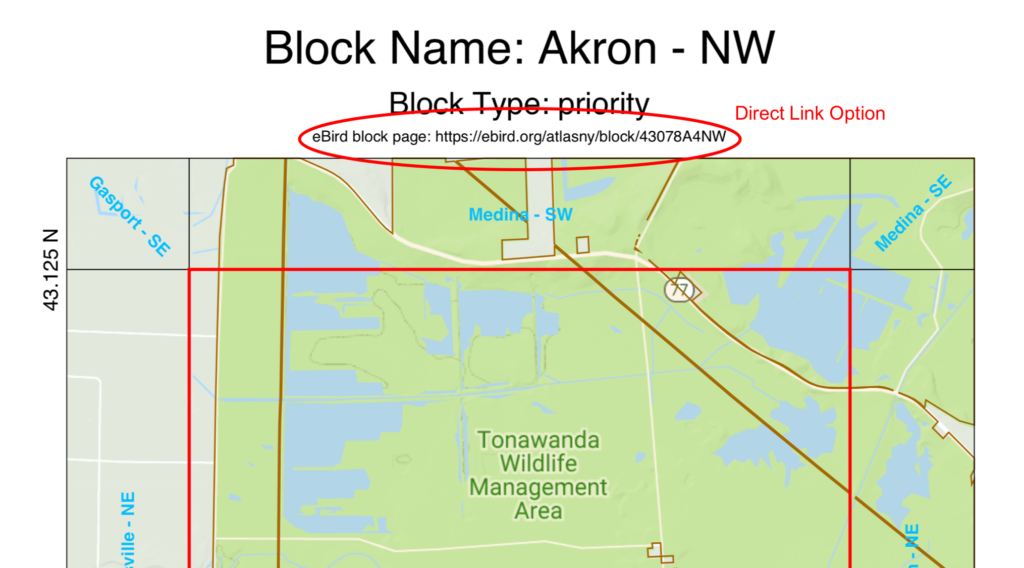Want to know what species have already been recorded in a block? It’s easy! Simply follow one of these three options.
Option 1: Effort Map
On the Effort Map, zoom in and click on the block of interest. A pop-up window appears that shows you some summary information. Click on the green “View all block data” button to see all the data for that block.
Option 2: Explore Regions
Use the Explore Regions search tool. If you know the name of the block you are interested in, simply enter it here. You can also enter in a county name and that will take you to a summary page for all the blocks in that county. To see the data for an individual block, go to the “Blocks” tab and select the block you are interested in. You can also see an overview for the entire state by typing in “New York” in the search field. This is where you can easily see how many species have been confirmed in the entire state and scroll through the list of species to see species-level information.

Use the Effort Map or Explore Regions options on the Explore tab to see block data.
Option 3: Direct Link
If you have already downloaded a map for the block of interest, click on the URL link on the top of the map and it will take you directly to that block’s data.

Click on the link on the PDF map to take you directly to the data for that block.
Beyond satisfying your curiosity, you might be asking how seeing block data helps you as an atlaser. It allows you to target future visits to fill in data gaps.
Target Missing Species Groups
You might notice that only forested species have been recorded when you know that there are also some fields and wetlands in the block. If that’s the case, consider planning your next visit to survey these overlooked habitats.
Target Other Times of Day or Year
If you notice that no rails, nightjars, or owls are documented for a block, plan an evening visit in the appropriate season. If cavity nesters have been overlooked, head out in the following spring before the migrants arrive to catch them at the height of their breeding activity.
Upgrade Breeding Codes
If you notice that a lot of species have been recorded in the block, but few have yet to be confirmed, time your next visit for when a lot of species are building nests or feeding young. This will give you the best chance to upgrade breeding codes and make sure the block is adequately covered.



